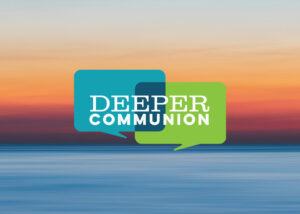There once was a congregation called Peach Blossom Community Church. It was approaching the end of the year with a significant financial shortfall, needing $60,000 to meet its annual budget. The finance committee jumped into action. Bulletin inserts used graphs and charts to illustrate the shortfall. Weekly announcements encouraged people to give generously to avoid a deficit. There was much concern. And then, at the 11th hour, several members of the church offered sizeable cheques to cover the shortfall.
On the first Sunday of the new year, the head of the finance committee announced that, due to tremendous generosity, the budget had been met. There was applause, and that was that.
When a newcomer to the church asked how the financial crisis had been averted, she was told, “Don’t worry. This happens every year.”
Peach Blossom Community Church is mythical, but this scenario is far from fictitious. In fact, it happens regularly in too many churches. Thankfully, there are ways to avoid this, but action needs to start now, at the beginning, not the end, of the year. Here are a few suggestions:
• Say please and thank you.
Charities routinely ask for donations, but in a pleasing way. They share stories of success, changed lives and the positive difference they are making. When gifts are made, donors receive a thank you, either by phone or mail. Churches, on the other hand, rarely make the case for receiving a gift and even more rarely say thank you when donations are received. In most churches, the only acknowledgment is a charitable receipt. A thank you letter with the annual receipt could tell people about all the things the church is doing and how their support makes a difference. Showing gratitude helps build community.
• Set it and forget it.
It’s easy to forget that the church has monthly expenses. Cash flow can be a problem if donors make only a lump sum gift at the end of the year. Many of us want to give monthly or quarterly. Churches can encourage donors to set up regular electronic fund transfers. The donations happen automatically so the church can stay on top of those monthly expenses.
• Make it easy.
Many of our younger churchgoers don’t write cheques. Some don’t even know how to write a cheque. They use electronic transactions and plastic. Is your church set up to accept debit- and credit-card donations? For a minimal charge, there are several online services available to help congregation make this happen. If you want the younger generation to give, your church needs to accommodate their way of giving.
• Join the joy-of-giving club.
At Peach Blossom, no one is responsible for inviting new members and attendees to participate in the joy of giving. No one explains why giving is part of the worship service, that it is an intentional act of giving thanks for all that God provides. No one explains the practical side of giving, the expenses associated with operating the church and its mission and outreach programs. This information should be shared periodically with all who participate in the church.
An honest and open conversation about church finances may be awkward, but will likely lead to more insights on why some people support the church and others don’t. It may also reveal new ways of reaching out to those in the pews and openly invite them to experience the joy of faithful generosity.
Darren Pries-Klassen is the executive director of Mennonite Foundation of Canada (MFC). For more information on impulsive generosity, stewardship education, and estate and charitable gift planning, contact your nearest MFC office or visit MennoFoundation.ca.







Leave a Reply
You must be logged in to post a comment.